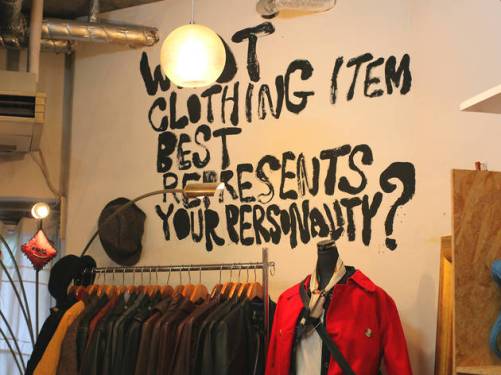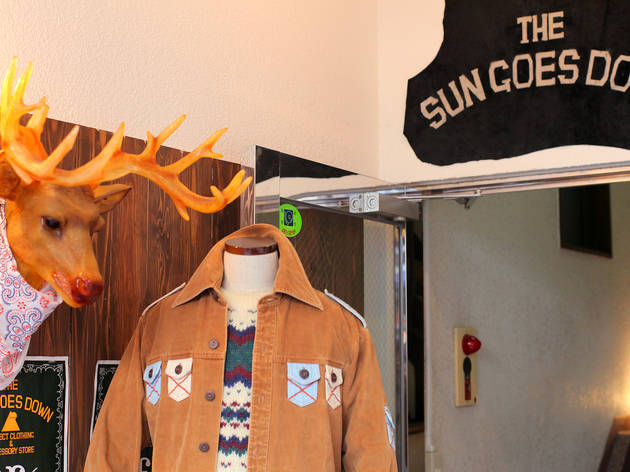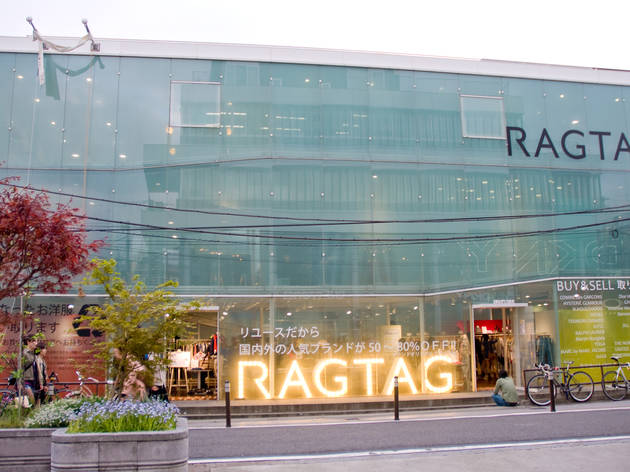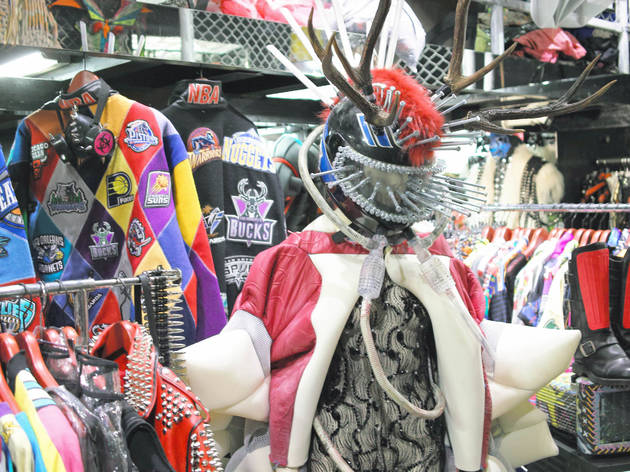Tokyo, Japan; a place of new and modern ventures, always moving forward in technology and fashion, but what about all those pre-loved goods? Where do they go? They seem like the forgotten generation, except clothing – no one hears about second-hand clothing and what happens to it. BUT, hold your horses, because someone is about to tell you what happens, and that someone is me!
First, let me give you a history of Japan and its recycling of clothing, or lack of, more like. Japan has only recently really started a push in recycling clothes and in the past has managed to amass about 1.97 million tons of pre-loved clothes each year, which were incinerated! Yep, that’s right – burnt to a crisp and not even given a chance to live once again!

In the past few years, in light of a growing environmental awareness, there has been more of a push in promotion of what to do with your unwanted clothing, which has helped a lot with their recycling problems. There has even been a promotion of how to care for the environment through TV shows. In a segment on Hanamaru Market, one of Japan’s most popular morning shows, a waste-recycling expert demonstrated how and what one can recycle in the home. Because this was displayed on a popular show, many Japanese people, housewives in particular, saw it as a very trendy way to care for their family. As a result, the recycling trend became very popular.
Now, the most obvious place for pre-loved goods is an op-shop, but do they even exist in Japan? I have to admit, I am definitely one to go to op shops over other places purely because my main goal in life is to save money, but when I went to Japan myself, I didn’t even think to find any. Typical, naive me thought there was no way Japan could have second-hand stores; it’s all so contemporary. But, of course I was wrong. Harajuku and Shibuya have lots of thrift shops and wow, do they look good!!
Let’s start in Shibuya (that’s the one for young people, remember). Here are some of the best thrift stores in Shibuya to give you an idea of the different things they offer. And yes, it may sound silly, but almost each thrift store has a different specialty in relation to the style of clothes they offer.
Keshiki is known for quality vintage labels and here you can buy fashionable retro clothing to provide a sleek and edgy look.

The Sun Goes Down is known for Western style menswear and offers vintage clothes for men.

Boy is known for well priced vintage Japanese brands that have some connections with the music world.

Now, let’s move on to Harajuku (the one that’s full of colourful, out there clothes) and what that has to offer! As you might expect, this area is characterised by shops that are a little…different.
Grimoire has clothes all with a hint of fairy tale and wonder. These clothes are more focused on the Dolly-kei style of fashion. As you can see this resembles the Lolita fashion found in Harajuku and definitely suits the area!
Ragtag is one of the most normal shops you’ll find as it offers pre-loved designer labels. Ragtag is one of a few bigger clothing recycling chains and has 15 branches across Japan.

Dog is most definitely one of those different shops. This place offers out there and crazy costumes which could most definitely rival Lady Gaga’s outfits! This shop would have to be my favourite! I could spend hours rummaging through all the different items, mix and matching clothes, trying to find the best outfit. My Facebook would certainly be full of interesting outfit ideas!!

For all those naive people about thrift shops in Japan, be naive no more! Now you know that they actually exist and where you can go to buy these awesome pre-loved clothes.
Before you all go, I have some bad news – hope you’re sitting down for this, it’s big. I’m sorry to tell you all that… this is my last blog! 😭 But, please, don’t be sad; just think of all those lovely memories of reading and commenting on my blogs, the feeling of anticipation as you ponder your next visit to Japan and the learning you have experienced about this intriguing country and what it has to offer! Our journey began with Kawaii and how the phenomenon took over Japan as well as the many different types of Kawaii. We then explored the art of Lolita fashion, the Gothic world and of course, our brolitas; who knew there were different types of Gothic brolita fashion? Our exciting adventure then finished off with navigating through Tokyo’s fashion districts, Harajuku and Shibuya, discovering many unique stores catering to all walks of life. Throughout this journey I have learnt lots about Japanese culture and have become much more aware of my surroundings, now making links between what I see in Australia and what is in Japanese culture. On one of my recent trips to Melbourne, I noticed a girl on the train wearing what I considered to be Gothic Lolita fashion (I was too shy to actually ask her) and certainly would have thought oddly of her before researching for my blogs. Now, you could say I have become more considerate of different types of fashion and the ideas and culture that underpin the styles due to my new found knowledge. I thank you all so much for your support and look forward to your last comments 😏




Interesting that the recycling of clothes has more recently gained in popularity in Japan. I wonder whether it has been slow in building traction because of the typically traditional approaches within that society. Perhaps there now sufficient generations of young people who have shed the traditional mantle and are contributing to the proliferation of such outlets. It appears that many of them have developed a cult following, given the illustrated styles. In Australia, so much of the recycled clothing is distributed or sold through charity outlets. It appears to be a burgeoning private industry in Japan!
LikeLike
The idea of recycling has definitely been limited, I suppose, due to Japan’s traditional views but also due to their forward thinking nature. They believe in economic growth and providing new products for customers. I certainly agree with your statement about new generations contributing to the proliferation of recycling clothes. Newer generations are far more exposed to worldly trends, such as second-hand stores. This exposure helps with widening their views and being able to build new ones that are outside of Japan’s tradition and rigor. However, even though it’s great Japan is taking a step forward in recycling clothing, as you mentioned, the second-hand stores are private industries and not for charity. It would be great to see Japan following Australia’s footsteps in terms of charity shops in the future but at least they have begun their recycling process!
LikeLike